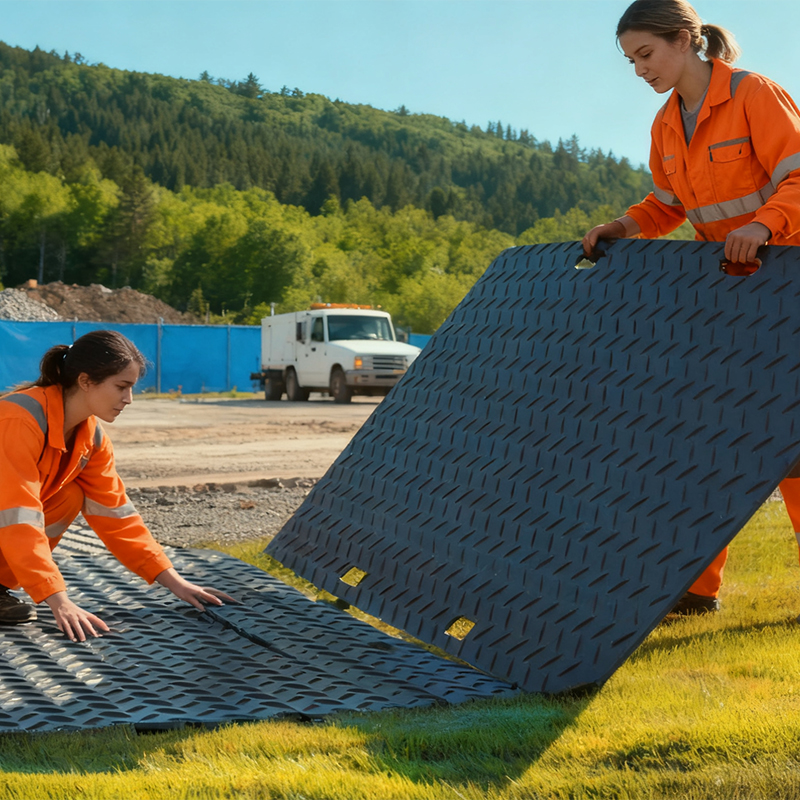For many temporary road and ground protection applications, HDPE (High-Density Polyethylene) mats offer significant advantages over traditional steel mats. The following table outlines the key differences:

Feature | HDPE Mats | Steel Mats |
1. Weight & Handling | ✅ Superior Advantage
• Extremely lightweight, typically 1/5 to 1/8 the weight of a comparable steel mat.
• Can be manually handled by 2 people. No crane or forklift required for deployment, enabling rapid, flexible setup. | ❌ Significant Disadvantage
• Extremely heavy.
• Mandatory requirement for cranes or heavy machinery to move and place, adding equipment costs and operational complexity. |
2. Surface Protection | ✅ Clearly Superior
• Flexible and resilient, conforms to ground contours for better load distribution.
• Non-abrasive; will not cut or grind into delicate surfaces like asphalt, concrete, or turf. Ideal for finished surfaces. | ❌ High Risk of Damage
• Rigid and hard with sharp edges.
• Can dig into, cut, or permanently damage paved or finished surfaces, especially under heavy loads. |
3. Safety | ✅ Inherently Safer
• Slip-resistant: Textured or grit-added surface provides excellent traction for vehicles and personnel, even when wet.
• Non-conductive of electricity and heat, safer around utilities.
• No sharp edges, safer for workers and tires. | ❌ Higher Risk Profile
• Extremely slippery when wet, muddy, or icy, creating a major slip/skid hazard.
• Conductive of electricity and heat, posing risks near power sources.
• Sharp edges and burrs pose laceration risks. |
4. Corrosion & Maintenance | ✅ Virtually Maintenance-Free
• 100% waterproof and corrosion-proof. Resistant to chemicals, salt, and rot.
• Will never rust, leading to a very long lifespan with zero maintenance. | ❌ High Maintenance
• Prone to rust and corrosion, especially in marine or humid environments.
• Requires ongoing maintenance (e.g., sandblasting, painting) to prolong life, adding long-term cost. |
5. Environmental Impact | ✅ Eco-Friendly
• Often made from recycled materials and are 100% recyclable.
• Chemically inert, will not leach contaminants into the soil. | ❌ Environmental Concerns
• Rust and paint can contaminate the ground.
• Production and maintenance have a higher environmental footprint. |
6. Long-Term Cost | ✅ Lower Total Cost of Ownership
• While the initial investment may be higher, their extremely long service life and zero maintenance result in a very low cost-per-use over time. | ❌ Higher Lifetime Cost
• While the initial purchase price may be lower, the shorter lifespan due to corrosion, combined with high maintenance and handling costs, increases the total cost of ownership. |
7. Jobsite Performance | ✅ User-Friendly
• Quieter when driven on, with less vibration and bouncing. |
|
